A tale of two sectors
The strength of the Australian banking sector is difficult to reconcile with the fundamentals.
The sector has generated an extraordinary total return of ~50% over the last twelve months, despite a tepid earnings growth outlook and increasingly extreme valuations.
With the ASX 200 being highly concentrated among banks and resources, the momentum of the ‘Big 4’ banks has been supported by a rotation out of the under-pressure resources sector. This is being exacerbated by passive flows, increasing foreign institutional ownership and quant/momentum trading.
While both the banks and the major iron ore miners are relatively unattractive from a fundamental standpoint, this report provides a top-down view of the banking sector’s current run of market leadership over resources.
The bank rally isn’t unique to the ASX
The rally in the banks has not been confined to the local market.
Major offshore banks have also posted strong gains over the last 12 months, which have been supported by the Fed’s pivot towards an easing bias in late 2023, and expectations that lower interest rates would support ‘soft landings’ across developed economies.
This dynamic has been quickly priced into bank valuations, both on the ASX and globally.
Figure 1: Global banks have rallied just as much as Australia’s ‘Big 4’ banks…

Figure 2: ...although Australian banks have re-rated more strongly (with the sector's valuation now at an all-time high)

ASX 200 bank sector valuations are expensive relative to global peers and ASX industrials
In an absolute sense, the ASX 200 bank sector’s forward PE multiple has never been higher, led by index heavyweight, the Commonwealth Bank (ASX: CBA).
Perplexingly, CBA trades on double the PE multiple of JP Morgan (24x vs 12x) – which is arguably the highest quality bank in the world – while having a lower return on equity (13% vs 15%), and offering a similar level of earnings growth (3yr consensus EPS CAGR of 6% vs 4%).
More importantly than the ASX 200 bank sector's absolute valuation, its valuation is also stretched relative to ASX industrials (i.e. ASX 200 ex resources). Moreover, we note that ASX 200 industrials have also re-rated strongly this year to date amidst the rotation out of resources, meaning bank valuations are effectively at the expensive end of what is a relatively expensive market.
However, when stripping out CBA, ‘Big 3’ Bank valuations are more reasonable on a relative basis (vs ASX industrials) compared to where they have traded historically.
Accordingly, our positioning within the sector is concentrated among the better valued ‘Big 3’ banks, with exposure to ANZ (ASX: ANZ), Westpac (ASX: WBC), and NAB (ASX: NAB) (and zero weighting to CBA).
Figure 3: 'Big 4' bank valuations are expensive relative to other ASX industrials....
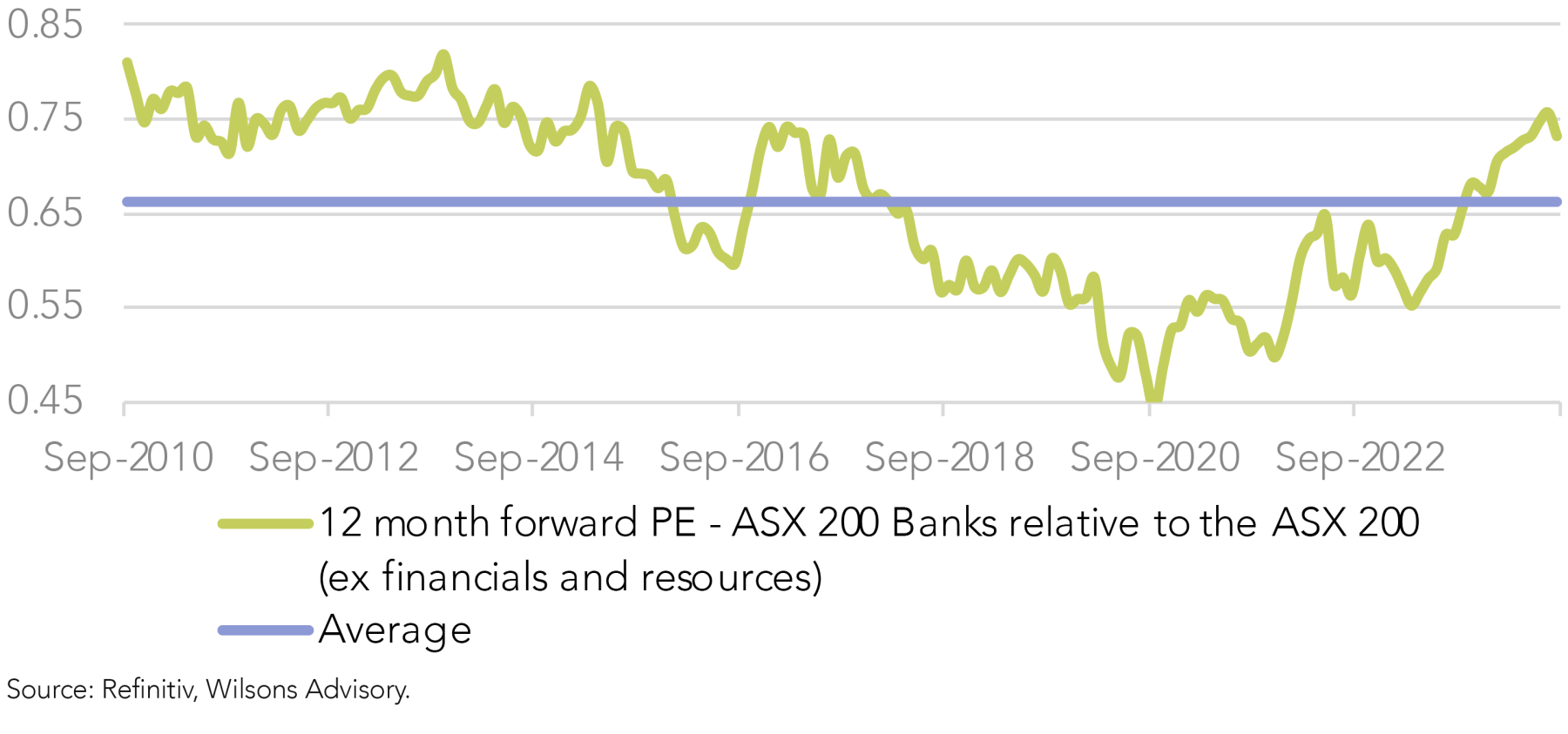
Figure 4: While CBA is comfortably the most expensive major bank in the developed world, the other ‘Big 4’ Banks trade more in line with global peers

Figure 5: ...but the ‘Big 3’ (ex CBA) trade at their historic average (relative to ASX industrials)
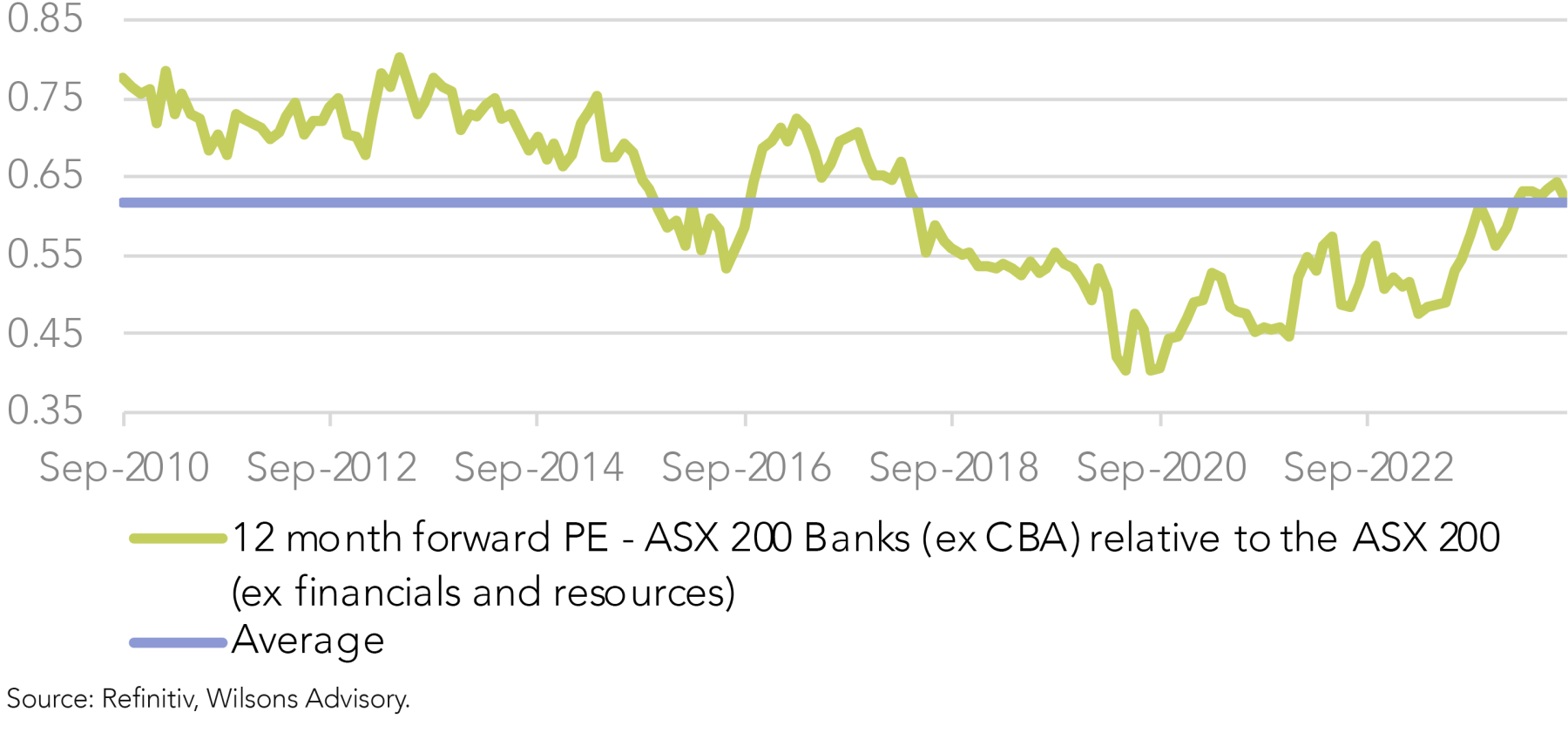
Figure 6: Beyond the banks, valuations are relatively demanding in other ex-resources sectors as well

Resources struggle amidst China weakness
China’s economy has been subdued, with persistent weakness in property construction activity, consumption and aggregate GDP growth. This is weighing on China’s demand for commodities, particularly iron ore.
The level of government policy support provided to China’s struggling property sector thus far has resulted in negligible impacts on property sales or construction activity, albeit the latest stimulus could help to stimulate activity. While the ultimate impact of China's latest stimulus is still unclear (see below), to date the iron ore market has been clouded by the structural imbalances in the country's real estate sector.
Overall, the resources sector has seen significant negative consensus earnings momentum amidst the worsening outlook for China’s economy and key commodity prices, making it an unattractive destination for investor capital.
Figure 7: The ASX’s all-important iron ore sector has been under pressure this year…

Figure 8: ...driven by weakness in China’s property sector
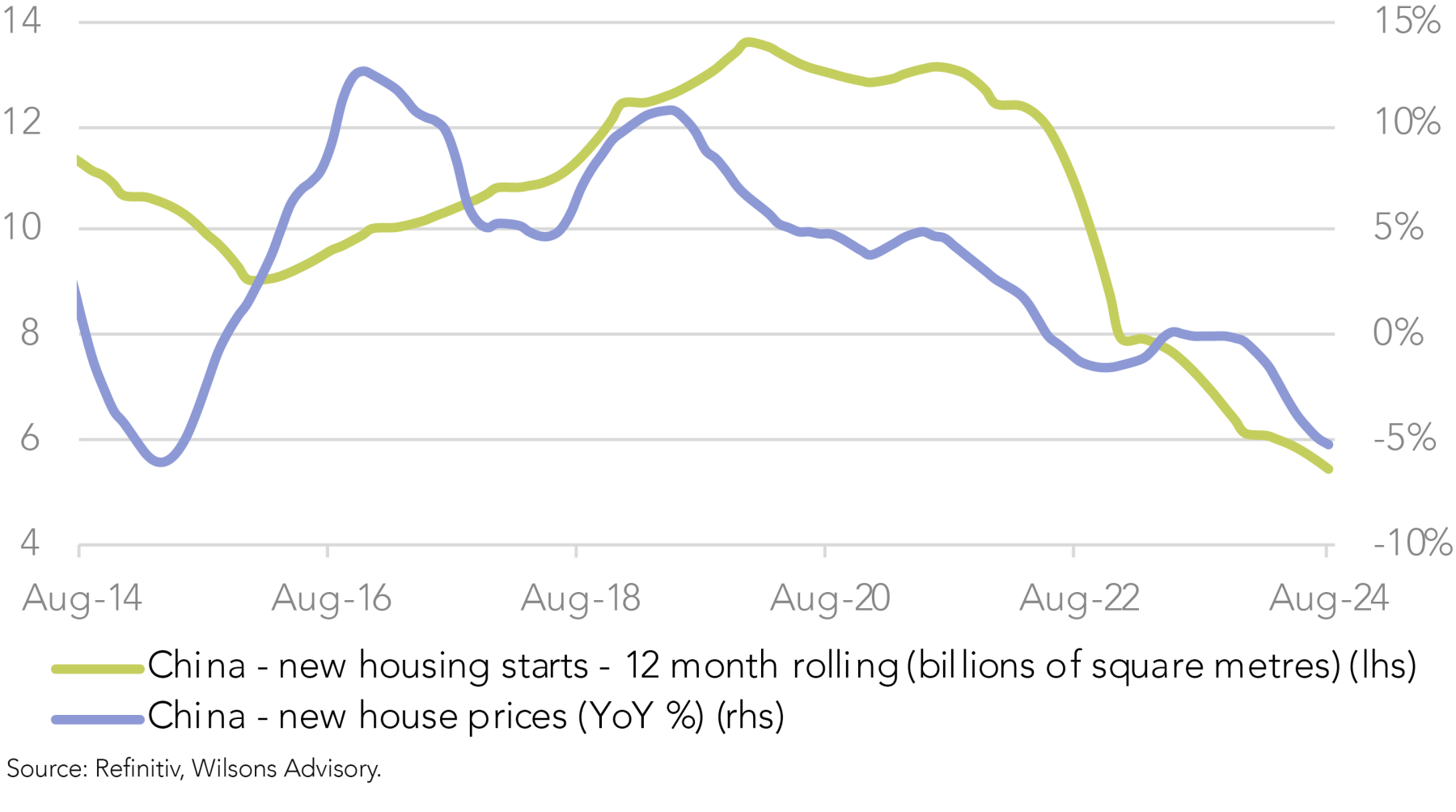
Figure 9: The resources sector has underperformed amidst a softening earnings outlook
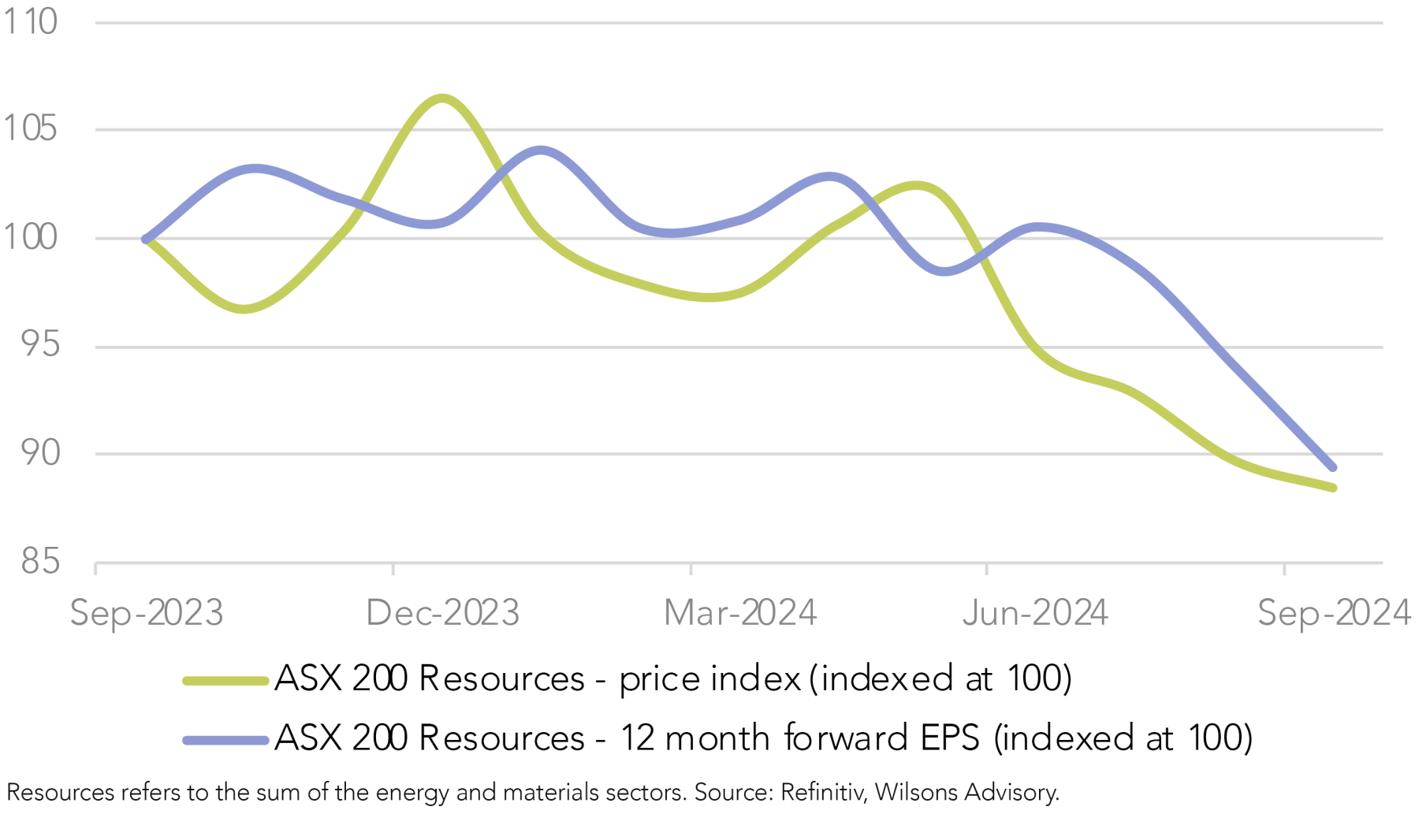
China's latest stimulus package aims to reinvigorate its economy
Yesterday, the Chinese government announced a range of broad measures aimed at stimulating its faltering economy, property sector, and stock market, including:
- Reserve requirement ratio (RRR) cut – the RRR has been cut by 50 bps, freeing up US$142bn in liquidity for new lending.
- Short term rate cut – the central bank cut the seven day reverse repo rate by 20 bps to 1.5%, which is expected to guide other lending and deposit rates lower.
- Support for housing – commercial banks will reduce interest rates on existing mortgages by ~50 bps and the minimum down-payment ratio for second-home buyers will be reduced from 25% to 15% nation-wide.
- Funding for stock purchases – the central bank will provide US$71bn in funding to institutions to buy stocks, and US$43bn in cheap loans to fund share purchases and buybacks.
While the impacts of these measures are unclear at this stage, if the latest stimulus translates to meaningful improvements in China’s underlying economy, this would augur positively for commodity demand and, therefore, the outlook of the ASX resources sector.
Market rotation: Out of Resources, into Banks
In a fundamental sense, both the major banks and iron ore miners are unattractive in our view. As aforementioned, the banking sector trades on an excessive valuation, while the resources sector faces weak sentiment and a negative earnings outlook.
However, due to the concentration of the local market, index-aware and large cap investors in Australia are often left with little or no choice but to remain (at least partially) invested in one of these two sectors (which in combination account for nearly ~60% of the ASX 200).
With such large positions in the index, market leadership has always been driven by one of these two dominant sectors. This year-to-date we have witnessed a market rotation into the banks as a source of ‘relative safety’ (compared to the resources sector), which is reflected in the sector’s positive (albeit only modest) consensus earnings momentum this year-to-date.
There are several technical factors that are likely exacerbating or contributing to the bank sector’s ongoing momentum, helping to drive valuations well beyond ‘reasonable’ levels based on the fundamentals, including:
- Passive flows – index funds, and in some cases active/index-aware funds, are forced buyers of the banks due to their large index weightings. Inflows into passive and index aware funds are arguably having a ‘snowball effect’ on the banks’ share prices and keeping short interest at bay (i.e. forcing short covering).
- Increasing foreign institutional ownership – overseas investments in the banks has continued to rise, with CBA’s offshore ownership for instance recently hitting an all-time high. For global investors that are looking for exposure to the Asia-Pacific region without the unwanted exposure to China’s economy, the Australian banks are the most logical home for capital at the large cap end of the ASX.
- Quant/momentum trading – notwithstanding the sector’s unappealing level of earnings growth, the banks have seen consistent (albeit modest) positive consensus earnings upgrades this year-to-date, which is likely supporting continued quant/momentum fund interest in the sector.
Figure 10: There has been a rotation out of miners and into the banks
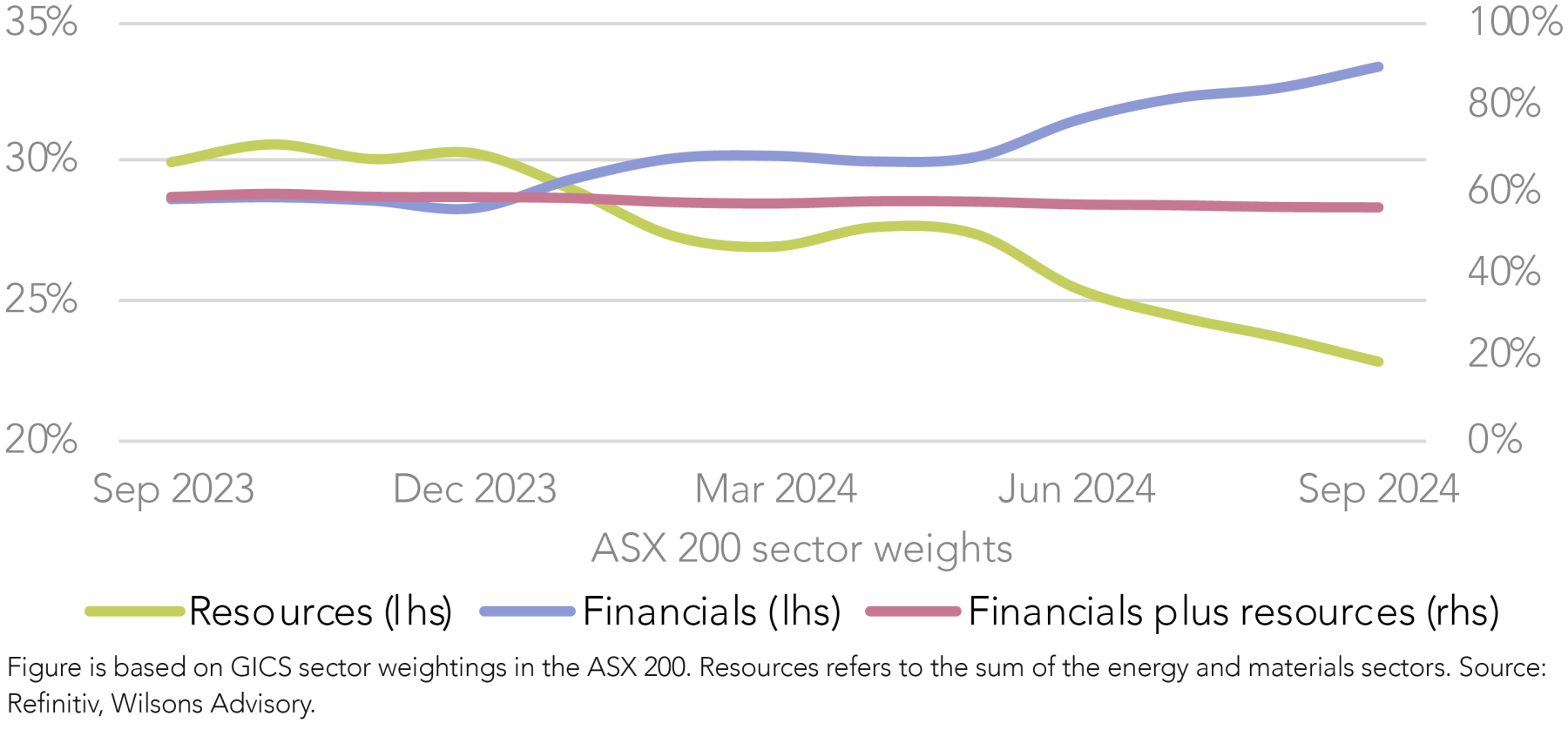
Figure 11: Both sectors offer uncompelling earnings growth…
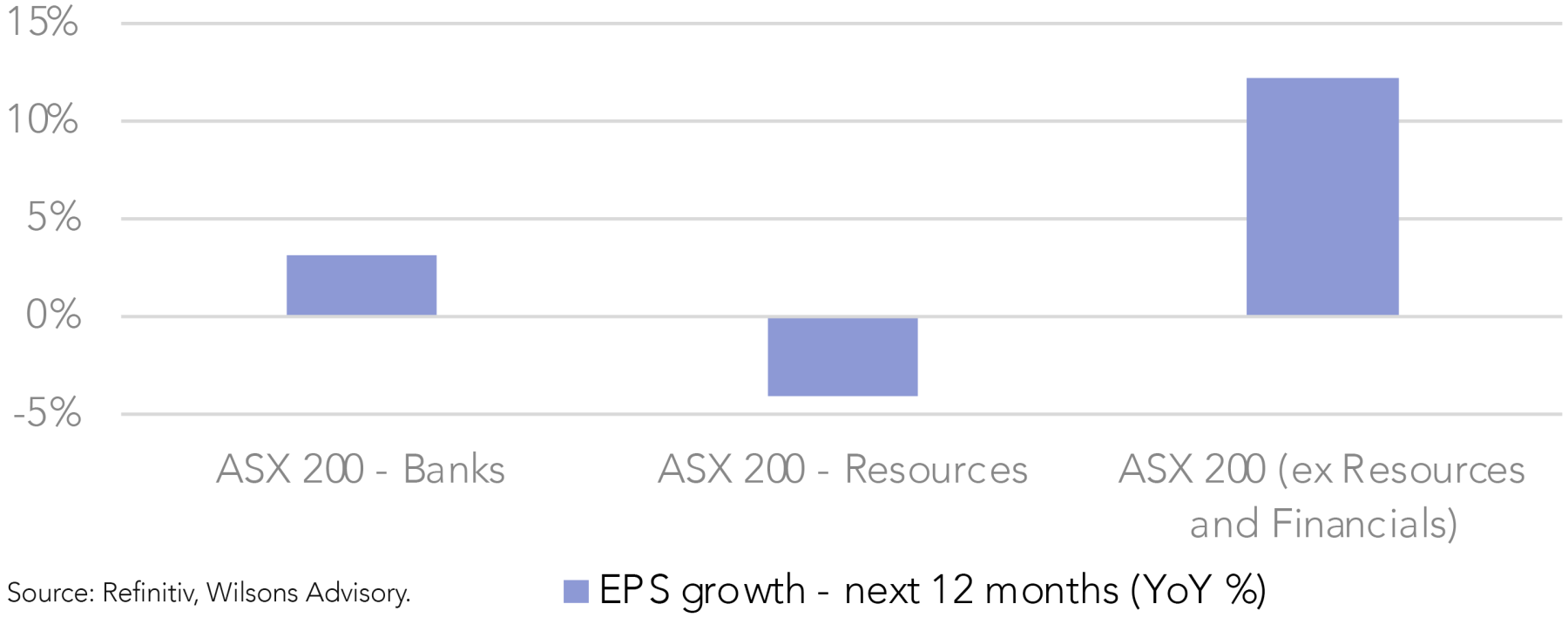
Figure 12: ...although the banks have provided a degree of ‘relative safety’ with modest positive consensus earnings momentum this year to date
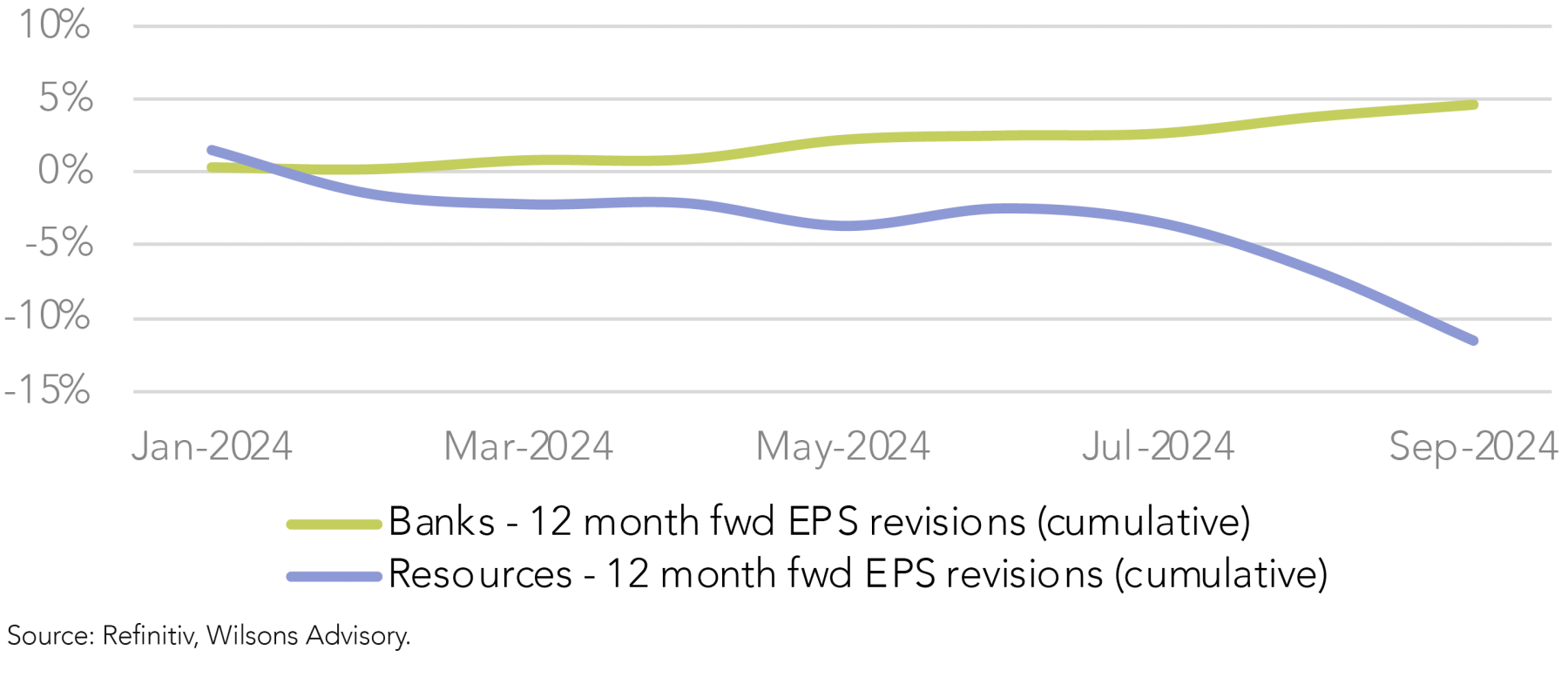
Waiting for a de-rating
With bank earnings multiples at all-time highs and the outlook for earnings growth still tepid at the best, we are comfortable retaining a significant underweight to the ‘Big 4’ banks.
While the timing of when valuations will de-rate is inherently uncertain (and bank/resources market leadership cycles can last for years), we are confident that the bank sector’s current valuation premium cannot be sustained in the long run, without a dramatic, unforeseen change in the earnings growth picture.
Potential catalysts for a de-rate of the bank sector could include:
- Rotation into resources – improvements in commodity prices (particularly iron ore) outlook could trigger a market rotation back into the resources sector (causing the banks to lose their market leadership position). While a meaningful recovery in the iron ore price is not our base case expectation, this could be triggered by stimulus in China (which we saw evidence of yesterday) or a meaningful pickup in the global growth pulse.
- Earnings downgrades – a key reason the banks’ rally has been able to continue unabated is that the sector’s earnings have continued to surprise consensus to the upside, thus providing a source of ‘relative safety’ compared to resources. That said, if the banks start to disappoint the market on earnings, the sector’s momentum could be hampered. Consensus downgrades could be driven by:
- Increased competition – while net interest margins (NIM) appear to be stabilising (implying that mortgage competition is easing), if the level of competition between the major banks re-intensifies (perhaps when the RBA begins to cut rates), this could present a headwind to margins and lead to earnings downgrades. Moreover, credit growth could be impacted by rising competition from non-bank lenders, the private credit sector, and Buy Now Pay Later players.
- Deteriorating asset quality – so far this cycle, bad debts have held up better than expected despite macro headwinds (higher interest rates), which has driven minor upgrades to consensus earnings expectations. However, asset quality is deteriorating, with home loan arrears and troublesome & impaired assets continuing to rise. This suggests bad debts are likely to rise over the medium-term, which is likely to present a headwind to bank earnings.
Figure 13: Bank/resources market leadership cycles can persist for years
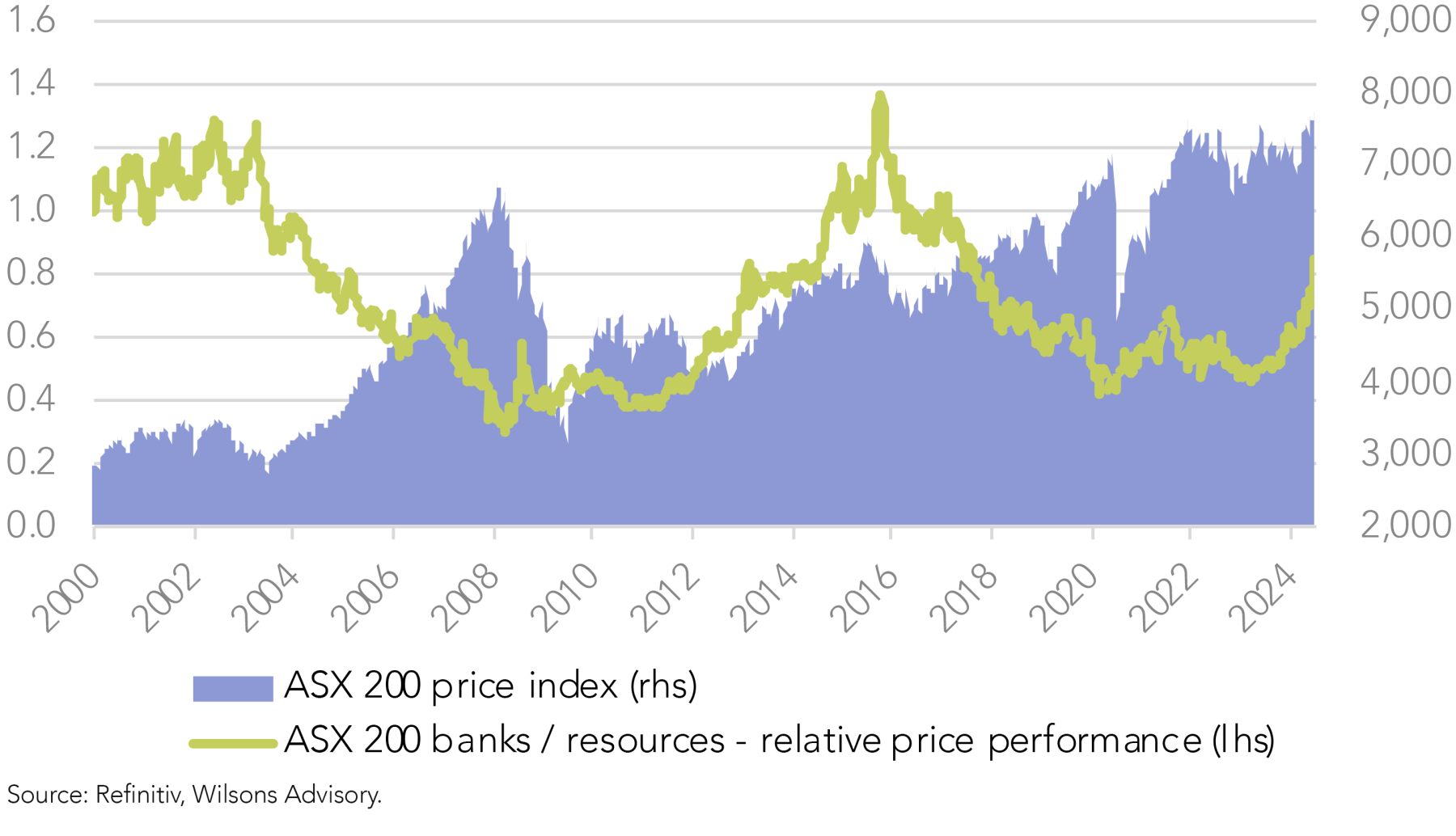
Closing thoughts
While bank/resources market leadership cycles can technically persist for years, we are comfortable with an underweight positioning in the banks and iron ore mines given both sectors are unattractive overall from a fundamental standpoint.
Given the bank sector’s stretched valuations, the portfolio’s positioning is concentrated in the banks that offer the best relative value, with ANZ being the portfolio’s sole overweight exposure.
Meanwhile, the portfolio is underweight iron ore, with a selective exposure to BHP, which is our preference as the lowest cost producer and the most diversified major (with greater exposure to copper).
Notwithstanding the portfolio's underweight to iron ore, the portfolio is actively positioned in companies exposed to commodities with attractive long-term supply/demand outlooks, including copper (ASX: SFR), gold (ASX: EVN), oil/gas (ASX: WDS), lithium (ASX: LTM), and diversified base metals (ASX: S32).
We also remain active in the corners of the market that provide strong earnings growth, including technology and healthcare.
Learn more
Wilsons Advisory think differently and delves deeper to uncover a broad range of interesting investment opportunities for their clients. To read more of our latest research, visit our Research and Insights.
2 topics
11 stocks mentioned

